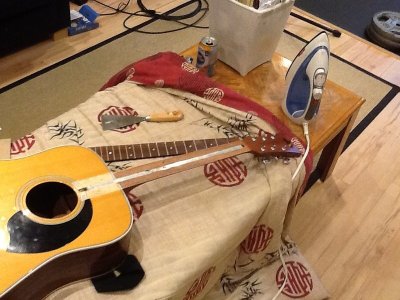As GuitarStv has noted, an iron for heat and specialty knives worked from end to end (I have violin makers knives, and other knives for the purpose of opening joints). Care is taken, and patience is required. Most fingerboards are glued on with Titebond or fish glue. Regretfully, some of the Asian made stuff is superglued on. While most glues begin breaking down at around 180 degrees, CA glues are far more tricky and sometimes unyielding. There are also the occasional locating pins to cut through, and surprises like truss rod strips that are not flat to the neck, but actually fit into a groove on the bottom of the fingerboard (certain old Washburns, and some National resonator guitars).
I use a cheap travel iron because it doesn't get rocket hot like a metal one will. Afterwards, clean up of both surfaces is achieved with a cabinet scraper or a sandpaper file with a glass sole.
The whole history of luthiery is based on the violin which is made to be taken apart for repairs. Stringed instruments are not usually meant to be glued together forever. For instance, the bridge of an acoustic guitar should NEVER be bolted on in case of overheating or too much string pressure. The bridge should be able to pop off to relieve the strain. A bridge that is bolted on will warp, tear open, or even break the top. But... some makers didn't get the memo.
Props to Leo Fender for bolting on the neck. He did it to save money, and ease of neck changing. Instead of refretting, he thought the player would simply buy a new neck. You can tell Leo didn't ever play, right? He didn't plan on making things easier for the luthier down the road, but I'm glad he did. Refretting is SO much easier when the neck is off the instrument - especially when recrowning and radiusing fret ends.

